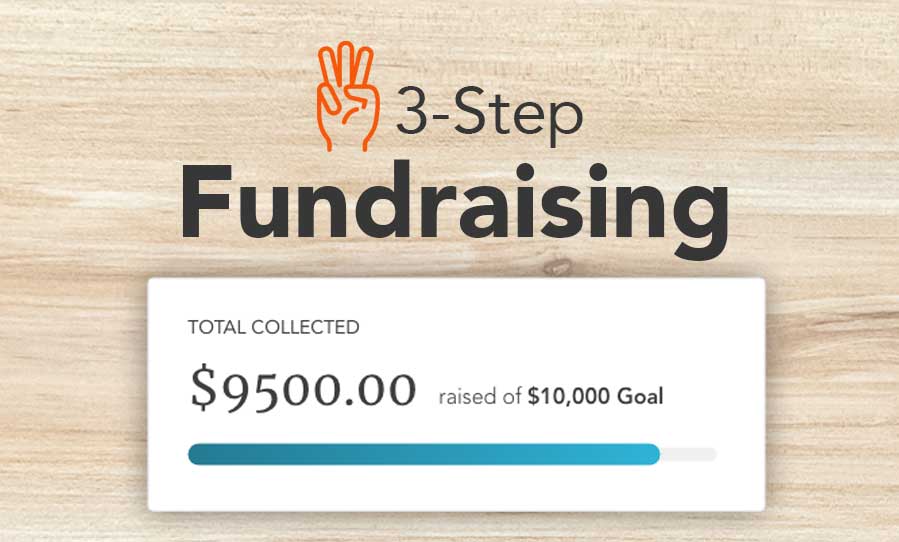Nonprofit Agency: Professional Solutions to Support Your Objective and Goals
The Function of Area Involvement in Nonprofit Fundraising: Structure Lasting Relationships for Sustainable Assistance
Area engagement is significantly acknowledged as a crucial element of successful nonprofit fundraising. The methods and methods utilized to engage communities vary commonly, elevating vital concerns regarding performance and effect.
Understanding Neighborhood Interaction
Community involvement is an essential component of effective not-for-profit fundraising initiatives. It describes the strategies and tasks that organizations use to connect with their regional areas, fostering partnerships that are mutually beneficial. Comprehending community engagement entails acknowledging its multifaceted nature, which consists of outreach, partnership, and engagement. Nonprofits need to identify essential stakeholders-- such as neighborhood participants, local businesses, and various other companies-- to create effective involvement strategies.
Effective neighborhood engagement is asserted on active listening and responsiveness to the needs and interests of the community. This process includes obtaining feedback, comprehending area characteristics, and guaranteeing that the company's objective straightens with regional top priorities. Engaging the neighborhood can take different kinds, consisting of public conferences, volunteer opportunities, and collaboration campaigns, each created to urge involvement and financial investment in the organization's objectives.
Furthermore, area engagement must be approached as a continuous dialogue instead of an one-time initiative. By fostering a comprehensive atmosphere where area voices are heard and valued, nonprofits can construct a solid foundation for future fundraising ventures. Ultimately, a deep understanding of community engagement empowers organizations to create authentic links that improve their overall effectiveness and sustainability.
Benefits of Solid Relationships
Strong connections developed with community involvement return many advantages for nonprofit fundraising efforts. Firstly, these connections foster depend on and reputation, crucial components in encouraging donors to contribute. When possible advocates see a not-for-profit actively entailed in their neighborhood, they are a lot more likely to think in its objective and impact.

Additionally, these connections assist in efficient interaction. Nonprofits can take advantage of their connections to share stories of impact, updates, and needs, guaranteeing that advocates remain enlightened and involved. This open line of interaction not just reinforces bonds however likewise urges referral promotion, broadening the not-for-profit's reach.
Finally, solid area ties can bring in brand-new companions and sponsors. Individuals and services are a lot more inclined to line up with companies that show meaningful neighborhood participation, providing added resources and assistance that can dramatically improve fundraising capacities. Therefore, cultivating robust partnerships with area interaction is integral to a not-for-profit's lasting fundraising success.
Methods for Efficient Interaction
Exactly how can nonprofits effectively engage their areas to enhance fundraising efforts? Creating targeted strategies is crucial for fostering meaningful links. Initially, leveraging social networks systems makes it possible for companies to share their mission dynamically and interactively, reaching a wider audience. Regular updates, involving web content, and calls-to-action can galvanize neighborhood rate of interest and involvement.
2nd, hosting community occasions, such as workshops, volunteer chances, or fundraising drives, helps with face-to-face communication, enabling nonprofits to showcase their influence and efforts. These events not just increase funds but additionally cultivate relationships and permit neighborhood members to involve straight with the cause.
Third, implementing personalized interaction techniques can boost involvement. Customizing messages to specific benefactor sectors based upon passions and previous contributions cultivates a sense of belonging and investment in the company's objective.
Lastly, creating partnerships with neighborhood services and area leaders can intensify outreach efforts. Collaborative efforts can boost visibility and reliability, showing a cumulative commitment to the neighborhood's visit their website health. By incorporating these techniques, nonprofits can develop long-term partnerships that enhance fundraising efforts and drive lasting assistance.
Measuring Interaction Success
While involving the area is crucial for successful not-for-profit fundraising, determining the performance of these interaction initiatives is just as important. Establishing clear metrics permits organizations to analyze how well they are linking with their target market and achieving their fundraising objectives. Secret efficiency indicators (KPIs) such as benefactor retention rates, volunteer engagement levels, and engagement on social networks platforms supply tangible data for examination.

Routinely assessing these metrics allows organizations to pivot their approaches when required, ensuring that neighborhood engagement stays aligned with their total objective. Additionally, sharing these outcomes with stakeholders fosters openness and builds trust, urging more neighborhood participation. Ultimately, a durable measurement structure not only informs future fundraising campaigns but additionally reinforces the connection between the not-for-profit and its advocates, preparing for lasting success.
Case Studies in Area Effect
Numerous study highlight the profound effect that area engagement can have on not-for-profit fundraising success. One remarkable instance is the "Food for Idea" initiative, where a regional food financial institution partnered with schools and organizations to host area dinners. These events not just elevated funds but likewise promoted a sense of belonging amongst individuals, considerably boosting donor retention prices.
Another engaging case is the "Environment-friendly Spaces Project," which included neighborhood homeowners in the revitalization of city parks. This initiative not only amassed financial backing from regional businesses however likewise cultivated a volunteer base that added to recurring upkeep and programs. The feeling of possession and satisfaction amongst neighborhood participants converted into sustained payments.
In the world of arts, the "Art for All" campaign efficiently involved regional artists and clients to create collaborative art installations, leading to increased presence and contributions for a neighborhood arts nonprofit.
These examples highlight that when nonprofits focus on area participation, they can create lasting partnerships that boost fundraising initiatives, making sure sustainable support and cultivating a vivid area culture. Such instances show that community engagement is not just a method however a necessary pillar of nonprofit success.
Verdict
Finally, neighborhood engagement is indispensable to the success of nonprofit fundraising efforts. By cultivating solid relationships with neighborhood stakeholders, organizations improve trust fund and reputation, causing improved benefactor retention and commitment. Carrying out effective involvement techniques and determining their impact guarantees that nonprofits can adjust and prosper. Inevitably, a robust structure of neighborhood support not only intensifies fundraising prospective yet likewise grows a culture of cooperation, vital for achieving long-lasting business blog here goals and maintaining purposeful influence.
Nonprofits have to identify essential stakeholders-- such as neighborhood participants, neighborhood businesses, and other organizations-- to produce efficient involvement strategies.

In conclusion, neighborhood interaction is essential to the success of go to this site not-for-profit fundraising initiatives.